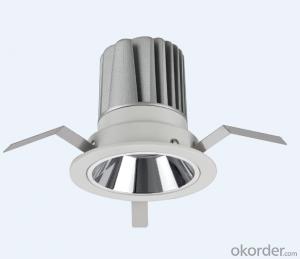Solar Inverter Accessories
Solar Inverter Accessories Related Searches
Grill With Led Light Bar Light Fixture With Chain Blu Ray Player With Recorder Blu Ray Player With Internet Steel Column Connection To Foundation Grinding Wheels Come In Grades From Coarse To Dodge Ram Led Light Bar Grill Led House Light Fixtures Small Led Light Fixtures Intellibrite Led Pool LightHot Searches
Type Of Inverter For Solar Types Of Inverter For Solar Used Solar Inverter For Sale Inverter Size For Solar System Solar Edge Inverter For Sale 5kw Solar Inverter For Sale Solar Inverter For Sale Solar Inverter For Battery Solar Inverter For Split Ac Solar Inverter For Laptop Solar Inverter For Fridge Solar With Inverter Price Solar Inverter With 2 Battery Solar Inverter Price In China Best Solar Inverter In China Solar Inverter Price In Dubai Solar Inverter Price In Uae Solar Inverter Price In Kenya Solar Inverter Price In Kerala Solar Hot Water Collectors For SaleSolar Inverter Accessories Supplier & Manufacturer from China
Okorder.com is a professional Solar Inverter Accessories supplier & manufacturer, offers integrated one-stop services including real-time quoting and online cargo tracking. We are funded by CNBM Group, a Fortune 500 enterprise and the largest Solar Inverter Accessories firm in China.Hot Products
FAQ
- The role of a voltage control unit in a solar inverter is to regulate and stabilize the voltage output from the solar panels, ensuring that it matches the required voltage for the connected electrical devices or grid connection. This unit helps to maximize the efficiency of the solar inverter and prevent any potential damage to the electrical system by maintaining a consistent and optimal voltage level.
- Yes, a solar inverter can be used with solar trackers. Solar trackers are designed to move solar panels throughout the day to optimize their exposure to the sun. The inverter is responsible for converting the DC electricity generated by the solar panels into AC electricity that can be used to power various appliances and devices. Therefore, the inverter is an essential component in any solar power system, including those with solar trackers.
- Yes, there are government incentives available for solar inverters in many countries. These incentives are aimed at promoting the adoption of renewable energy and reducing carbon emissions. One common incentive is the solar investment tax credit (ITC) in the United States, which allows homeowners and businesses to deduct a percentage of their solar installation costs from their federal taxes. In some countries, such as Germany, there are feed-in tariffs that require utility companies to pay a premium for the electricity generated by solar inverters. Additionally, some local governments offer grants or rebates for installing solar inverters or offer low-interest loans to finance the purchase and installation of the equipment. It is important to check with your local government or relevant authorities to understand the specific incentives available in your region.
- A solar inverter can be repaired in many cases, depending on the extent of the damage or malfunction. However, in some situations, a replacement may be necessary if the damage is severe or the inverter is outdated.
- An on-grid solar inverter is designed to convert the DC power generated by solar panels into AC power that can be fed into the electricity grid. It synchronizes the solar power output with the grid's frequency and voltage, ensuring a seamless integration and allowing any excess power to be exported back to the grid. On the other hand, an off-grid solar inverter is used in standalone solar power systems that are not connected to the grid. It converts the DC power from solar panels into AC power for immediate use or storage in batteries. These systems typically require additional components like batteries and charge controllers to manage power storage and supply during periods of low solar generation or high demand. In summary, the main difference between the two types of inverters is their purpose: on-grid inverters are used for grid-tied systems, while off-grid inverters are used in standalone systems not connected to the grid.
- Yes, a solar inverter can be used in areas with unstable grid power. Solar inverters are designed to convert the DC power generated by solar panels into AC power for use in homes or businesses. In areas with unstable grid power, a solar inverter can help stabilize the electricity supply by utilizing the solar energy generated. It can operate independently or in conjunction with the grid, providing a reliable power source even during grid outages or fluctuations.
- Yes, a solar inverter can be used in a solar-powered irrigation system. A solar inverter is responsible for converting the direct current (DC) produced by solar panels into alternating current (AC), which is necessary for powering electrical devices such as pumps and motors in an irrigation system. By connecting the solar panels to a solar inverter, the energy generated by the sun can be efficiently utilized to operate the irrigation system, making it a sustainable and cost-effective solution for agricultural purposes.
- The role of a solar inverter in grid management and stability is to convert the direct current (DC) electricity generated by solar panels into alternating current (AC) electricity that can be fed into the grid. It ensures that the electricity generated by the solar panels is synchronized with the grid's frequency and voltage, thereby maintaining grid stability. Additionally, solar inverters can also provide grid management functionalities like reactive power control and voltage regulation, helping to balance and stabilize the overall grid system.













































